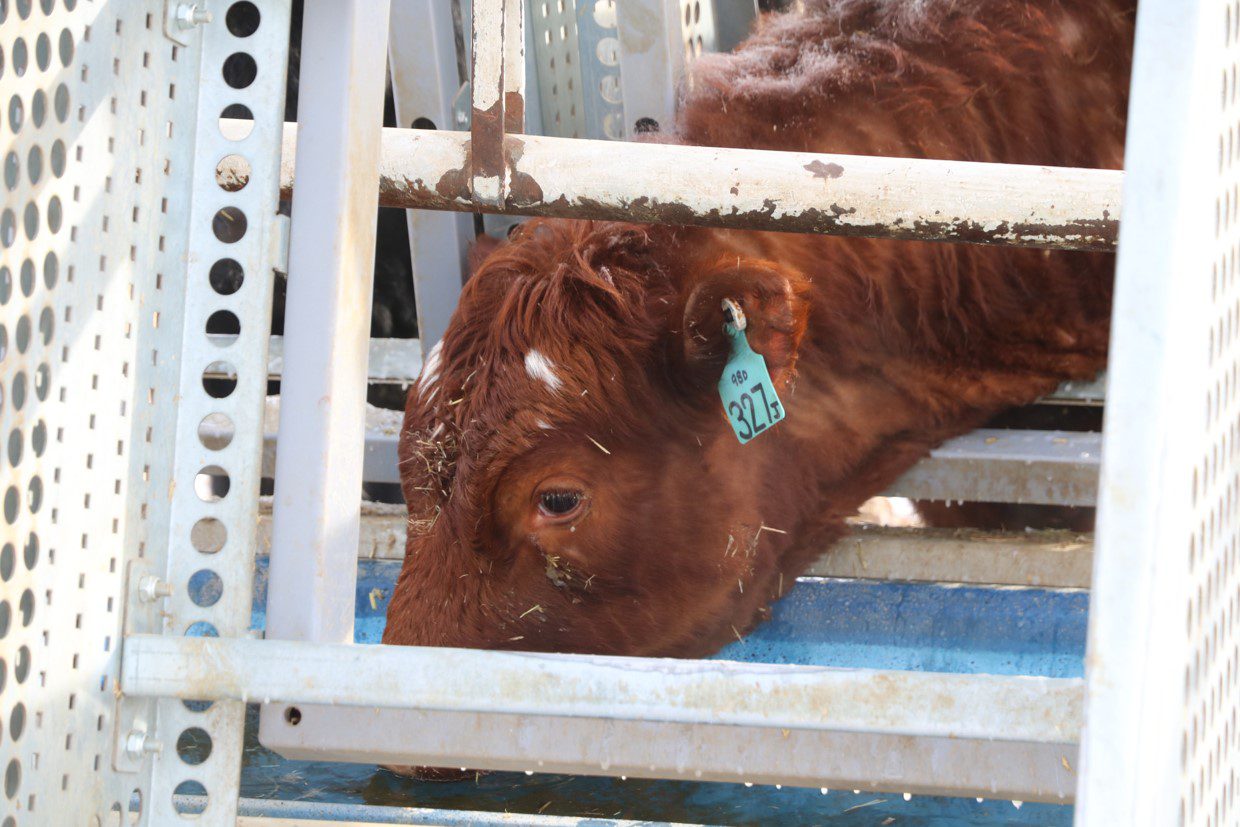
A childhood spent on a Manitoba farm and in 4H, a bachelor’s degree in Agriculture and Extension, a master’s in Ruminant Nutrition, and a PhD from the University of Alberta? Susan Markus seemed destined for her current role as a Lakeland College livestock research scientist. “It’s not just the ag stuff,” she points out. “The extension studies are almost as important. At the time I didn’t know what that meant, but they effectively provided me with knowledge transfer tools that have been invaluable throughout my career. And never more than now when I regularly communicate with, and provide guidance to, farmers and students.” Add the importance of knowledge transfer skills to her leadership of the CAAIN-supported project, Precision Ranching for Improved Reproductive and Grazing Efficiencies, and one can appreciate how perfect Dr. Markus’ background is for the work she so enjoys.
Her blend of private-, public-, and academic-sector experience provides a perspective that serves her well as she manages the Precision Ranching work. “I know what I know, and I know what I don’t know. That’s allowed me to put together a strong team, which matters when you’re conducting this kind of research. The results we’re seeking cannot be generated in a vacuum. There are too many moving parts, and success depends on coordinating the activities of a group of highly competent professionals.”
The team must be excellent to deal with such a demanding topic. The project came to be in part because Lakeland College recently introduced a degree in Agricultural Technology. The emphasis on AgTech made Susan wonder if there weren’t ways to assess bovine fertility using existing automation, thereby reducing the manual labour requirements of operating a commercial ranch. A cow’s ability to produce viable offspring may not seem important to the layperson, but it’s a critical component of livestock operations. Without fertile cows, there is no source of revenue.
“We need to find a way to determine early on which heifers must be removed from the herd because they are unlikely to conceive. That way the rancher is not needlessly investing in an unproductive animal,” she explains. “One avenue we’re exploring is to insert a rumen bolus into the heifer to measure changes in temperature and movement, both of which can be indicators of a female’s estrus. The technology we’re using was developed for the dairy industry, and we’re hopeful we can create an algorithm that will make it applicable to beef cattle as well. A number of relevant factors can be assessed simply by examining the heifer visually. We’re trying to look ‘under the hide,’ so to speak, using verifiable, quantifiable, and reliable data sent directly to the rancher’s computer or mobile device. We think that in addition to the heifer’s fertility potential, the bolus’ readings should also be able to give the farmer 24 to 48 hours’ advance notice of a calf’s birth–information that helps with resource allocation. This project is about increasing the efficiency and profitability of livestock operations, so the more data we can generate, the greater the value the associated technology will provide.”
Additionally, the team is evaluating the effectiveness of solar battery-powered GPS tags attached to the ears of cattle in British Columbia. This is specific to that province, because of a common practice that has animals grazing freely in forests, making it difficult for ranchers to know exactly where their animals are at any given time. This component of the research includes the use of drones to track the cows in harsher terrain. While this may seem unconnected to fertility, it’s about overall herd management and sustainability, which makes it directly relevant to Susan’s project.
“We are also experimenting with the value of using ultrasound to assess the maturity of a heifer’s reproductive tract. This technology has existed for a while, but we wanted to dig a little deeper. In our first year of research, we noticed a correlation between a more mature reproductive system and earlier conception. That’s useful. If a cow calves earlier in the season, her offspring will be bigger sooner, which is an advantage when the rancher goes to market. What’s more, that use of ultrasound is inexpensive making it potentially even more valuable.” She pauses. “Really, we’re testing existing technologies to see which are effective and which provide the biggest bang for their buck. As we’re only a year in, it’s too early to draw conclusions. But I can say that so far, the techs tend to be validating each other’s results. So, it may come down to price points. If we can identify cost-effective tools capable of predicting a cow’s fertility, and then communicate that to farmers, we will be helping to make Canada’s beef industry more viable.”
The final piece of the puzzle has Susan working with a BC-based software company called LlamaZOO to develop a platform to compile the different data points into one mobile solution that makes it relatively easy for a user to access all the available information. A recent demo of their progress showed impressive visualizations (i.e., digital twinning) of the ranch layout and cattle data points.
CAAIN’s support has made the project affordable for the various industry partners, which include ranches in Manitoba, Alberta, and British Columbia. They pay for the technology being tested on their animals, but the funding allows them to recover 40% of their costs. The same applies to LlamaZOO, who need to pay for only 60% of their developers’ time, an investment they’re willing to make because they want to enter the AgTech sector. Exactly the kind of win-win scenario CAAIN was created to facilitate.
CAAIN Contribution
$143,237
Total Project Value
$1,295,508
Project Contact
Susan Markus
Livestock Research Scientist
Lakeland College
susan.markus@lakelandcollege.ca